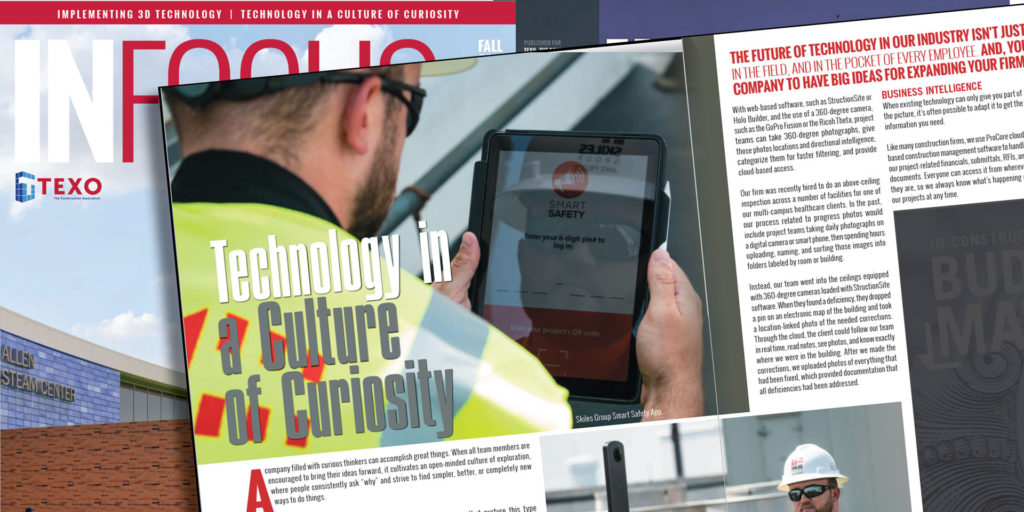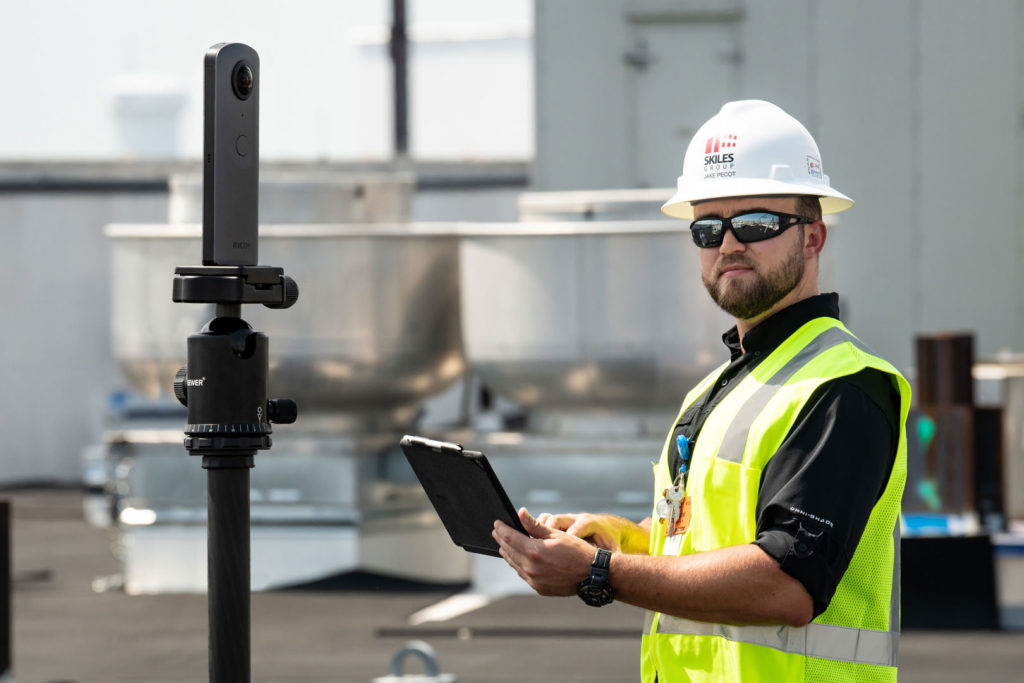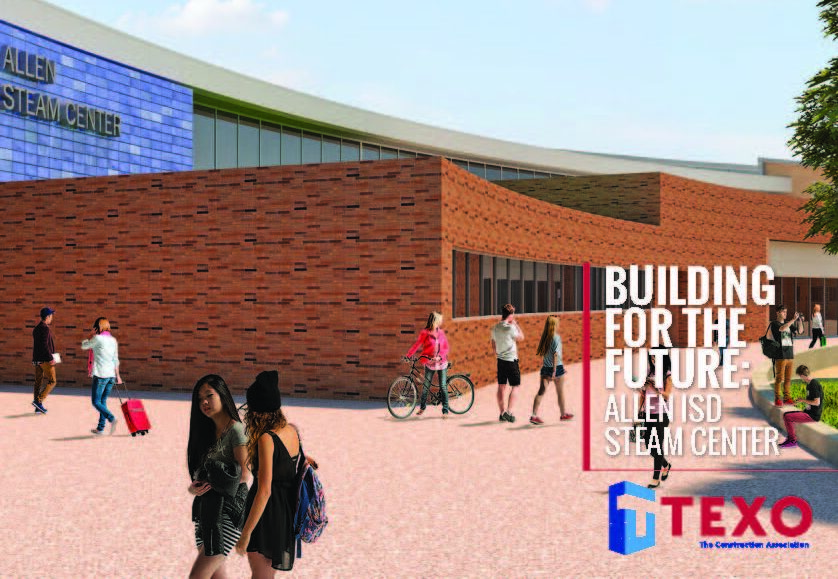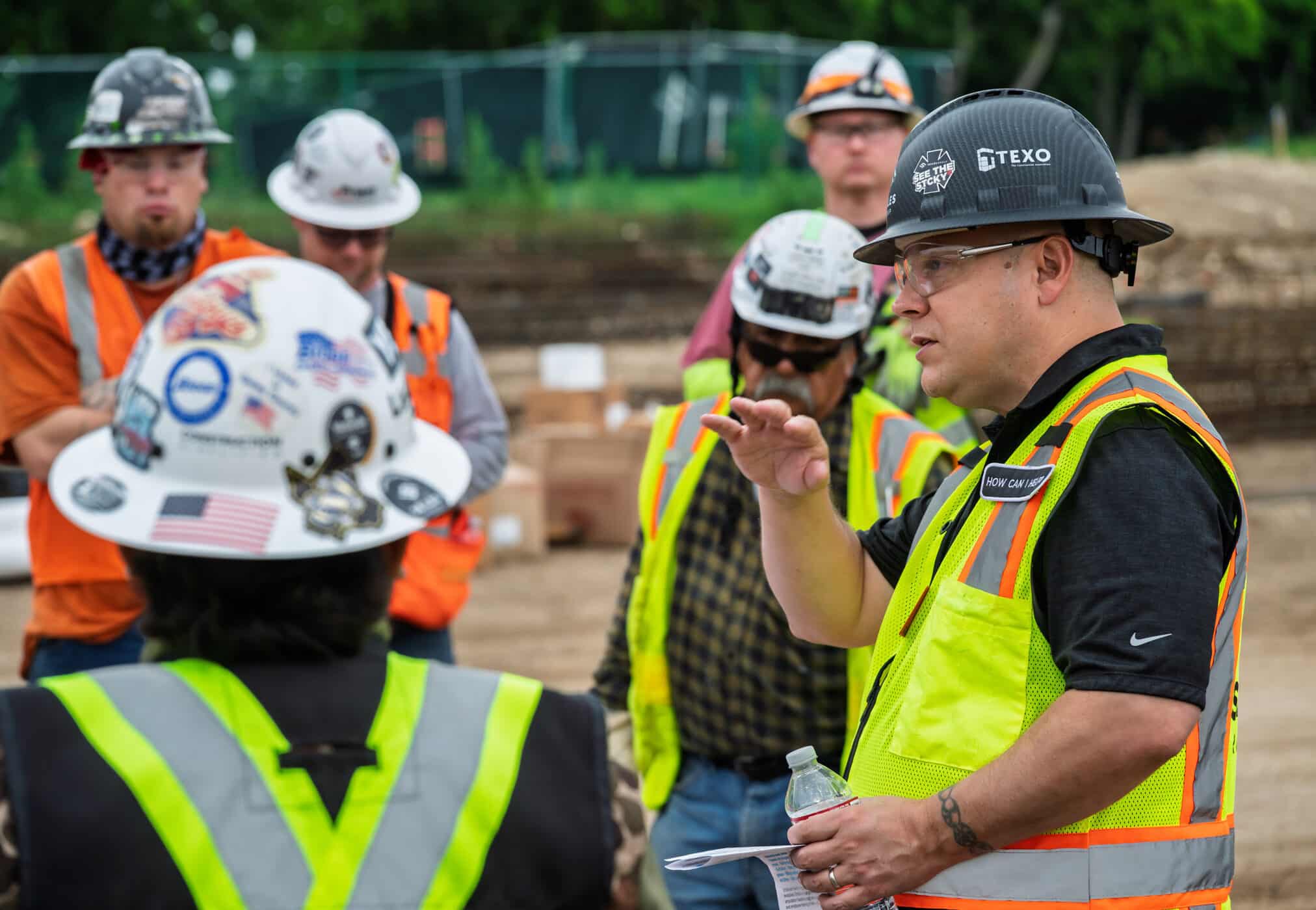At Skiles Group, one of our core values is to Be Curious. COO Keyan Zandy penned an article for TEXO’s Fall 2018 newsletter on how this mindset applies to our daily work. We invite you to read the article below and also to access the full issue online.

A company filled with curious thinkers can accomplish great things. When all team members are encouraged to bring their ideas forward, it cultivates an open-minded culture of exploration, where people consistently ask “why” and strive to find simpler, better, or completely new ways to do things.
Forward-thinking firms that nurture this type of culture in their businesses know that “plug and play” is only the beginning with respect to technology. They seek new ways to leverage the multitude of options to stay ahead of the curve, drive performance, and deliver more value to clients. Sometimes they adapt existing technology to suit their needs, and sometimes they tap into their own well of innovation to create something entirely new.
3D Cameras and Software
In this era of innovation, technology already exists to help construction firms convert unproductive time into time well-spent. For example, digital photography has been used to document project progress on jobsites for years, but advancements with cameras and photography-related software now make digital images more versatile and impactful.
With web-based software, such as StructionSite or Holo Builder, and the use of a 360-degree camera, such as the GoPro Fusion or the Ricoh Theta, project teams can take 360-degree photographs, give those photos locations and directional intelligence, categorize them for faster filtering, and provide cloud-based access.
Our firm was recently hired to do an above-ceiling inspection across a number of facilities for one of our multi-campus healthcare clients. In the past, our process related to progress photos would include project teams taking daily photographs on a digital camera or smart phone, then spending hours uploading, naming, and sorting those images into folders labeled by room or building.
Instead, our team went into the ceilings equipped with 360-degree cameras loaded with StructionSite software. When they found a deficiency, they dropped a pin on an electronic map of the building and took a location-linked photo of the needed corrections. Through the cloud, the client could follow our team in real time, read notes, see photos, and know exactly where we were in the building. After we made the corrections, we uploaded photos of everything that had been fixed, which provided documentation that all deficiencies had been addressed.

Business Intelligence
When existing technology can only give you part of the picture, it’s often possible to adapt it to get the information you need.
Like many construction firms, we use ProCore cloud-based construction management software to handle our project-related financials, submittals, RFIs, and documents. Everyone can access it from wherever they are, so we always know what’s happening on our projects at any time.
But what we really wanted was to be proactive, not reactive, with respect to continuously improving our performance and delivering value. To achieve this, we needed a “scoreboard” to track key metrics in real time, so we could see where we were excelling and, more importantly, make targeted corrections to improve, project after project.
We are currently working to create this scoreboard by pairing ProCore with a service called Construction BI, which will ultimately integrate all of our ProCore data points into an SQL Server database. Another service, called Power BI, will then be able to access the data for comprehensive analytics and reporting.
When fully implemented, this tool will give us customizable, visual dashboards and reports for the key performance indicators (KPIs) we want to track and manage: lean, safety, quality, schedule, and financials. We’ll have the information we need to clearly see our opportunities to increase productivity and reduce waste, track trends, analyze costs by company or by project, find data entry errors, and spot “red flags” that could hinder a project’s success. Eventually, we plan to take it a step further by creating custom dashboards for owners, so they can track their project’s progress in real time.
Smart Safety
Sometimes, the technology you really need doesn’t yet exist, so you must be creative. After struggling to design and print legible, project-specific crisis management cards for our workers in the field to carry and easily reference, we decided to approach this low-tech problem from a completely different angle: We have developed our own crisis management app, named Smart Safety.
As a worst-case scenario example, if a backhoe were to break an unmarked, high-pressure gas line, it would be critical that everyone on-site remembered what to do and where to go, or was able to quickly access that information. Precious minutes needed for an expeditious evacuation could be lost in the relay of information from the field crew to the foreman, to the project superintendent, and to the other staff on-site.
Our app uses credentialed log-ins and geolocation/geofencing to connect teams and provide project-specific crisis management and safety information for field staff on all active jobsites. In the event of an emergency, anyone on-site can use the app to immediately notify the project’s superintendent. When this alert is approved, a push notification is issued to all users on-site to inform them of the emergency. They will instantly know what they need to do next. They also have the ability through the app to message, call, and email project team members, as well as call or get directions to the nearest clinic, hospital, police station, or fire station.
Smart Safety is currently in beta testing internally, but we aren’t keeping this to ourselves. We plan to launch it to the public this fall at smartsafetyalert.com, so all interested construction firms can have access to this important tool.

Small Changes, Big Impact
The future of technology in our industry isn’t just in the office; it’s also in the field, and in the pocket of every employee. And, you don’t have to be a big company to have big ideas for expanding your firm’s use of technology. Even small efficiencies or improvements can have an outsized impact. A commitment to continuous improvement and a creative approach to the utilization of technology can help any company level the playing field.



